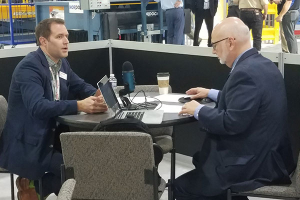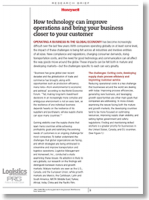How Technology Can Improve Operations
Over the coming years, IoT, Big Data, and mobile devices/applications should all play a larger role in helping companies create streamlined, end-to-end supply chains that span the globe, whether they’re operating in mature markets or emerging economies, these firms will continue to rely on technology that helps improve their operations and bring them closer to their customers.
Operating a business in the global economy has become increasingly difficult over the last few years.
With companies operating globally on at least some level, the impact of these challenges is being felt across all industries and involves entities of all sizes.
New compliance and regulations, changing consumer demands, rising transportation costs, and the need for good technology and communication can all affect the way goods move around the globe.
These impacts can be felt both in mature and developing markets - but the challenges specific to each can vary greatly.
“Business has gone global over recent decades and the globalization of trade and commerce has brought, along with opportunities such as production efficiency, many risks - from environmental to economic and political,” according to the World Economic Forum.
“Yet, making long-term investment decisions in an increasingly more complex and ambiguous environment is not an easy task, as the resilience of any individual business depends heavily on the resilience of its suppliers and purchasers, whose supply chains can span many countries.”
Gaining visibility over the supply chains that span many countries while achieving profitability goals and satisfying the evolving needs of customers is an ongoing challenge for most companies.
To better understand the challenges that global organizations are facing, and which strategies are being embraced to streamline and improve transportation and logistics operations, Logistics Management and Honeywell, Inc., conducted a study examining these issues.
As adoption is likely to vary globally, our research on the findings will distinguish between mature and growth markets. Mature markets are seen as the U.S., Canada, and the European Union, while growth markets are Mexico, the Caribbean, Latin and South America, META (Middle East, Turkey, Africa), India, China and the Pacific Rim.
The challenges: Cutting costs, developing supply chain process efficiency and improving customer service
Reducing operational costs is a key challenge that businesses around the world are dealing with today.
Improving process efficiencies, generating new business, and leveraging growth opportunities are other main goals that companies are addressing.
In more closely examining the issues facing both the mature and growth markets, the developing countries tend to be more focused on optimizing resources, improving supply chain visibility, and setting tighter government and safety regulations.
Finding and maintaining skilled workers is a greater priority for businesses in the United States, Canada, and EU countries.
What’s Related


Favorites





